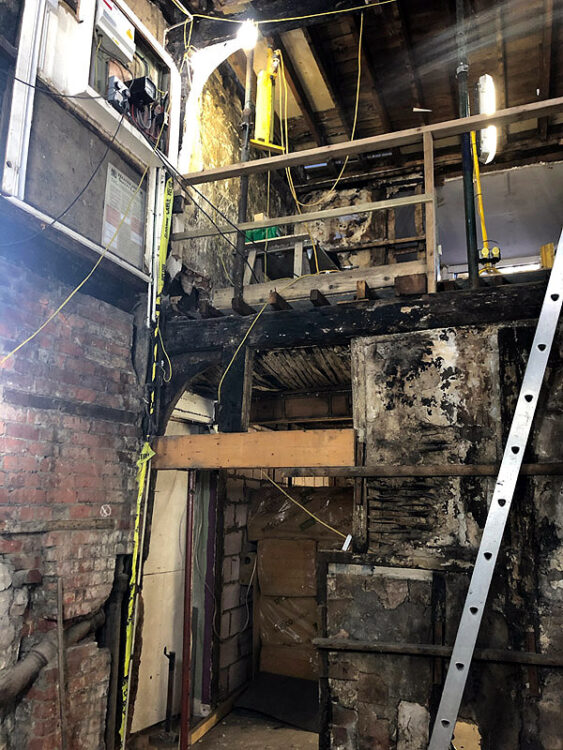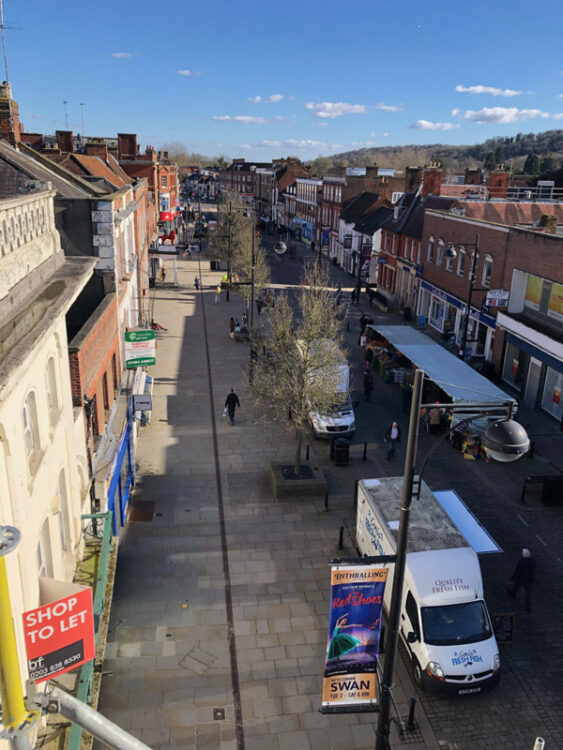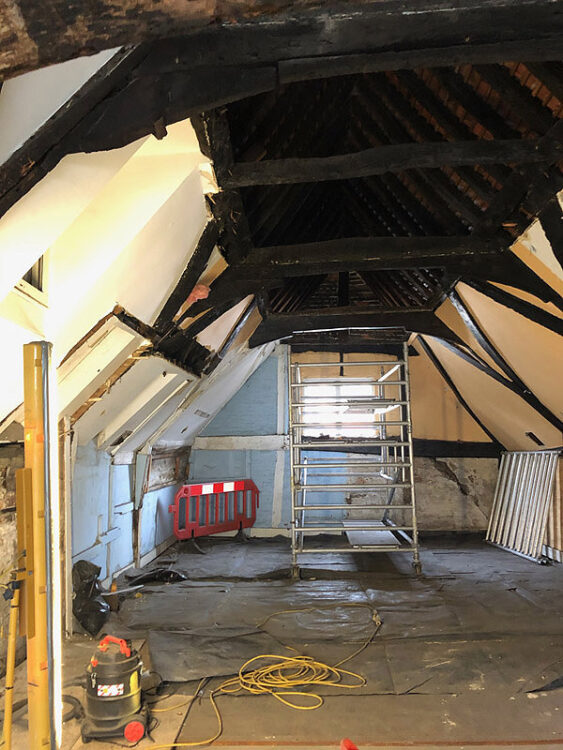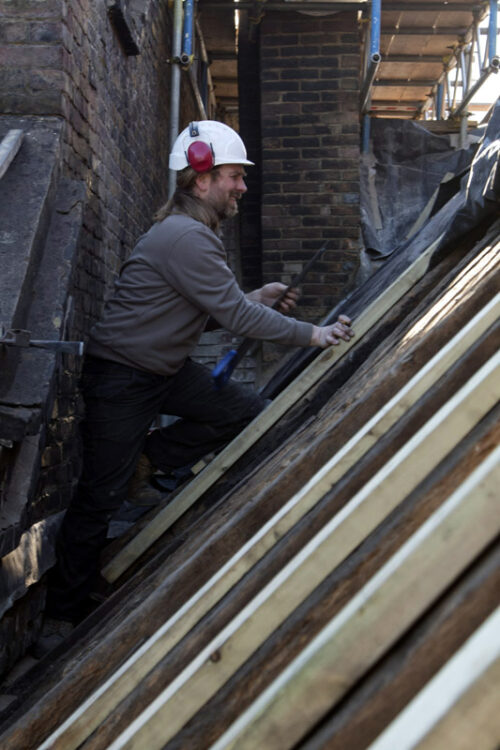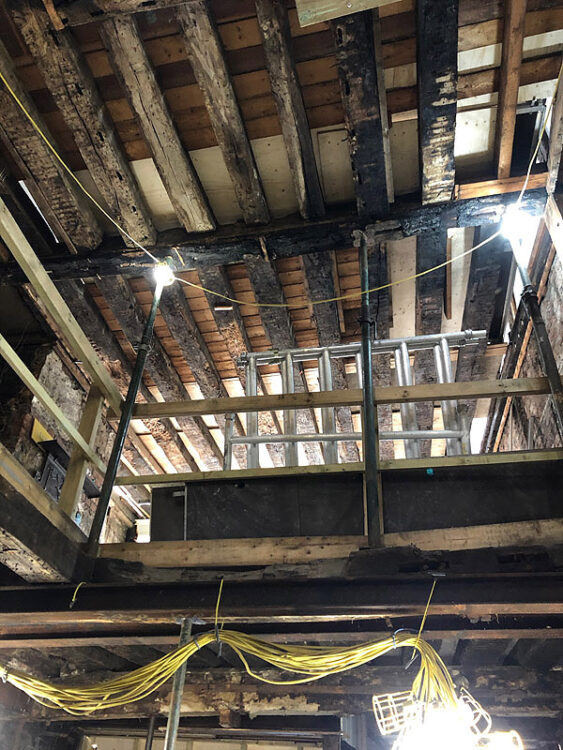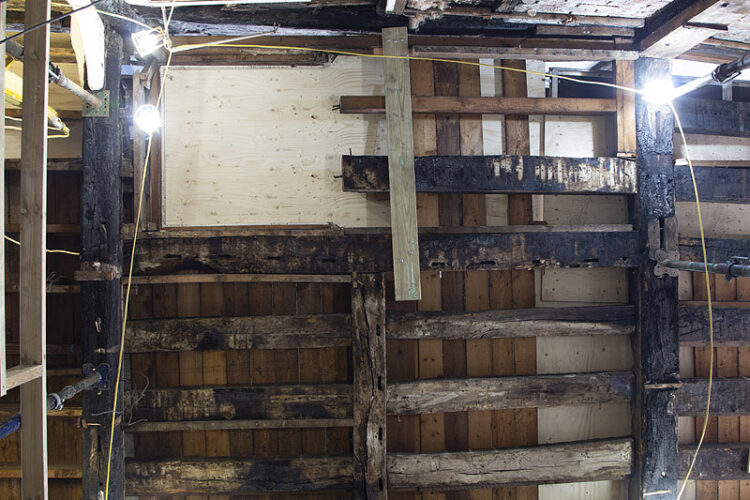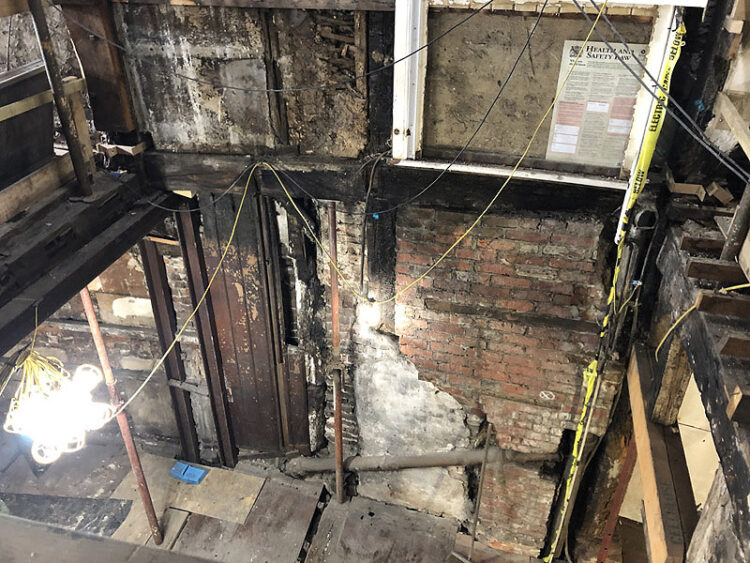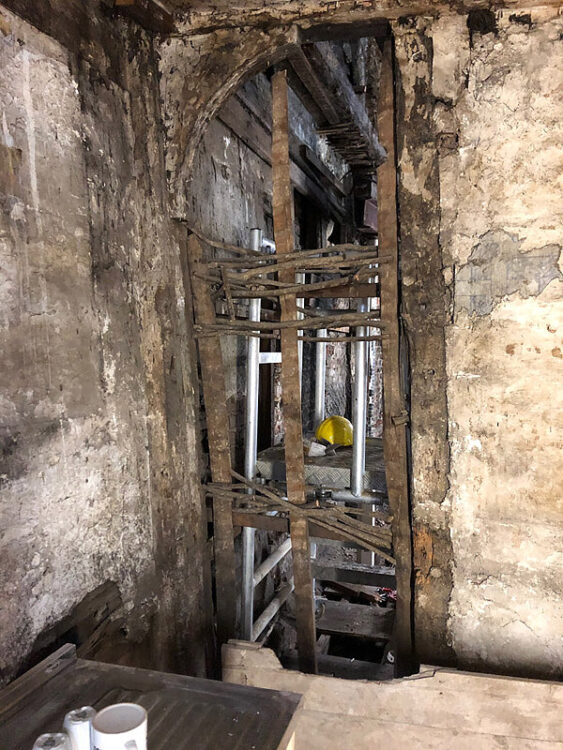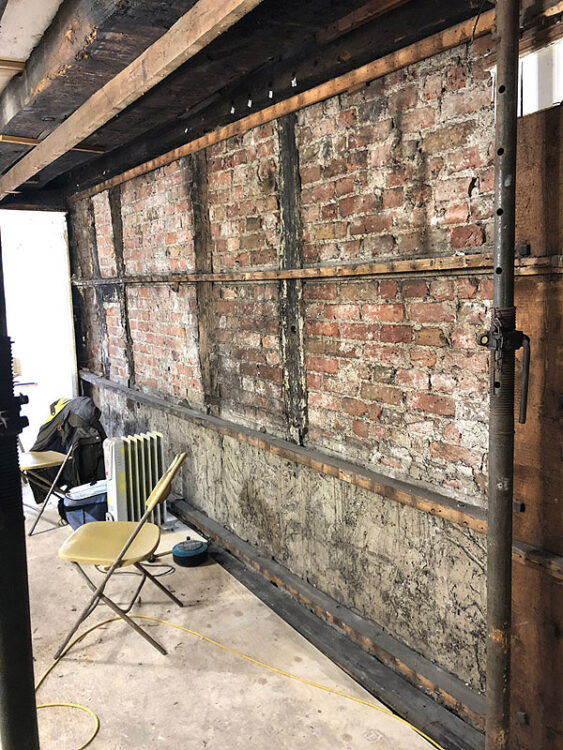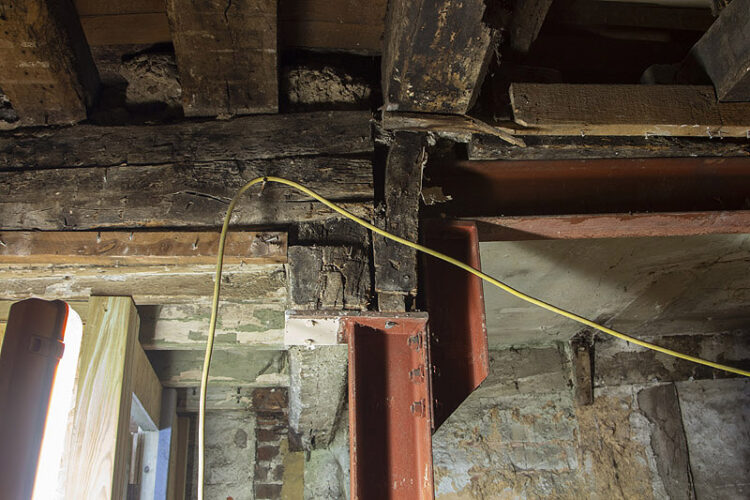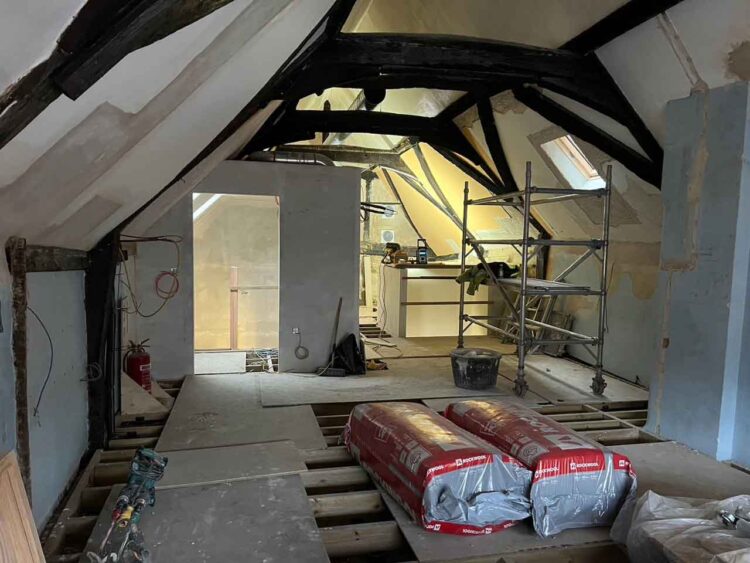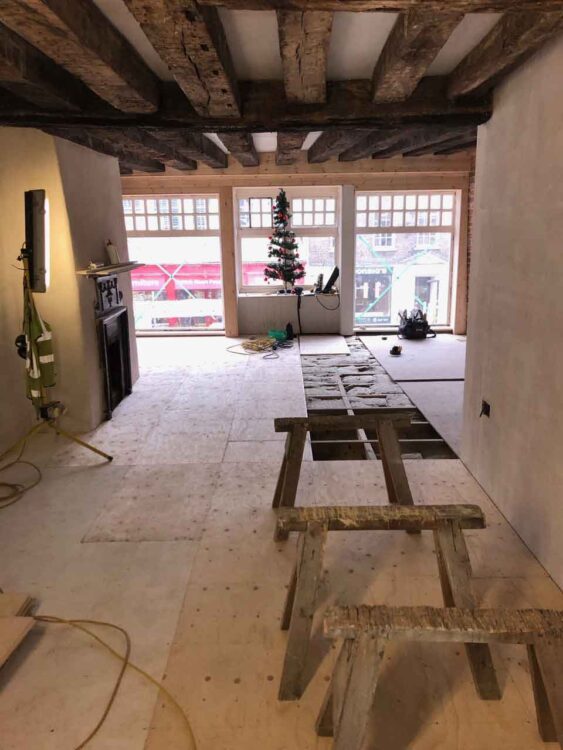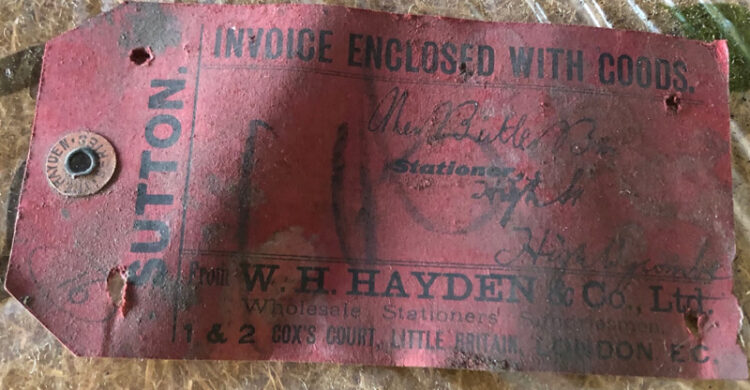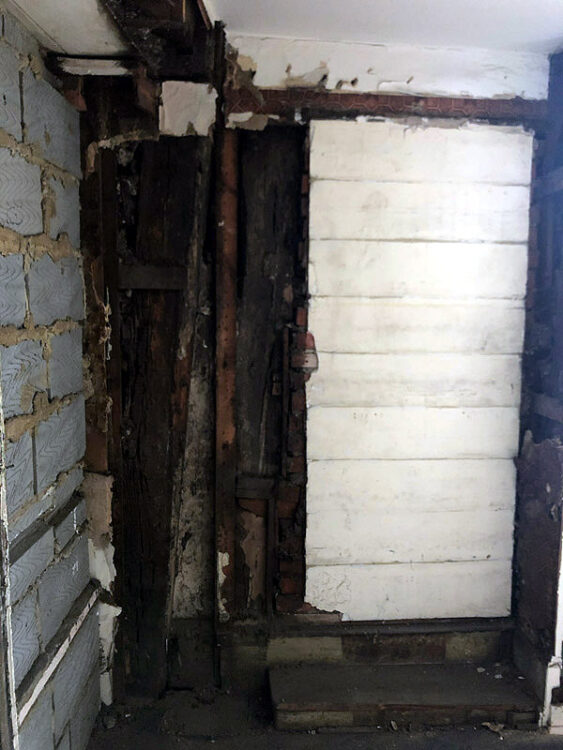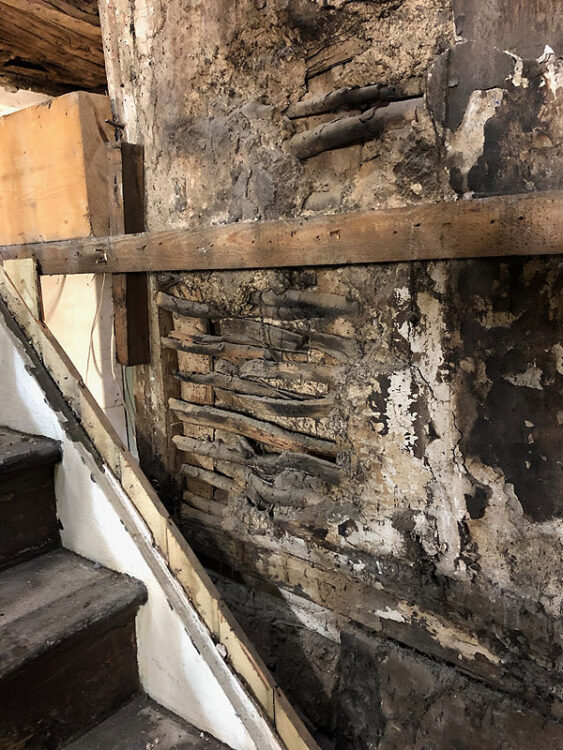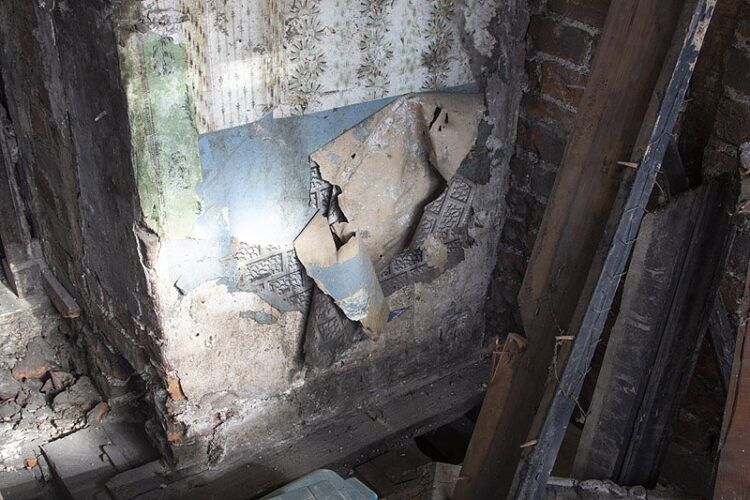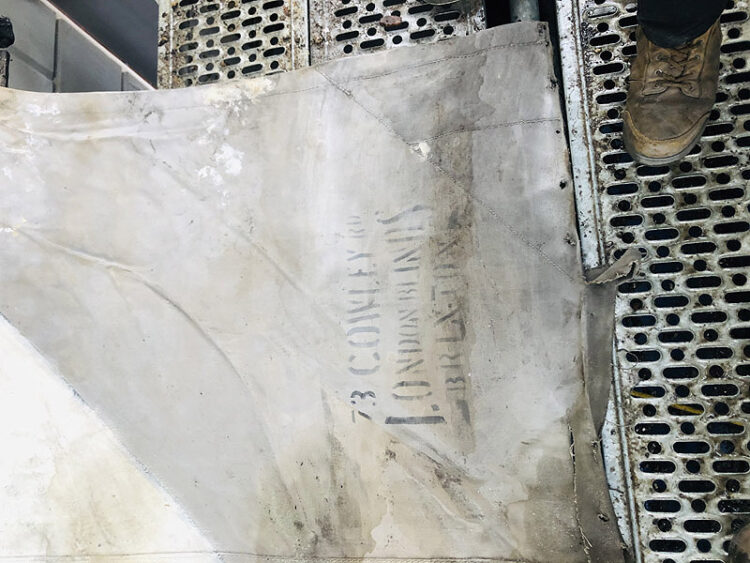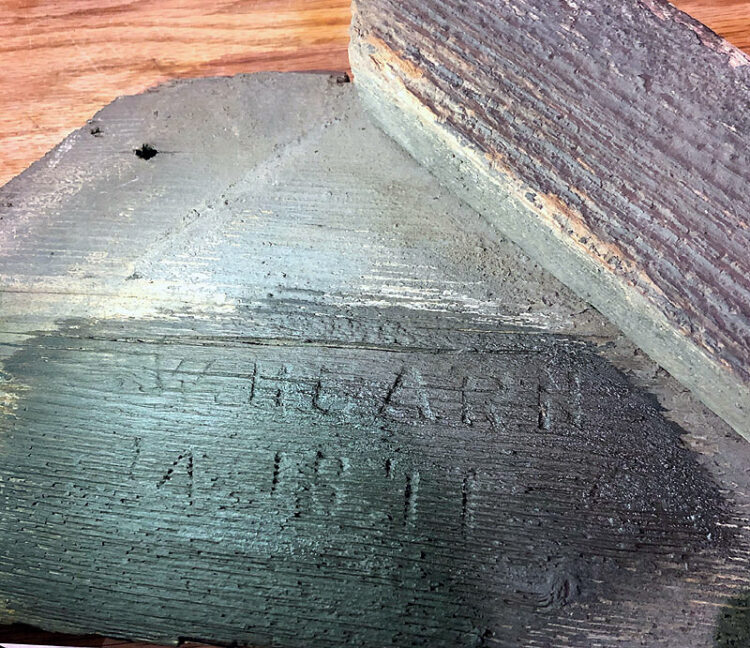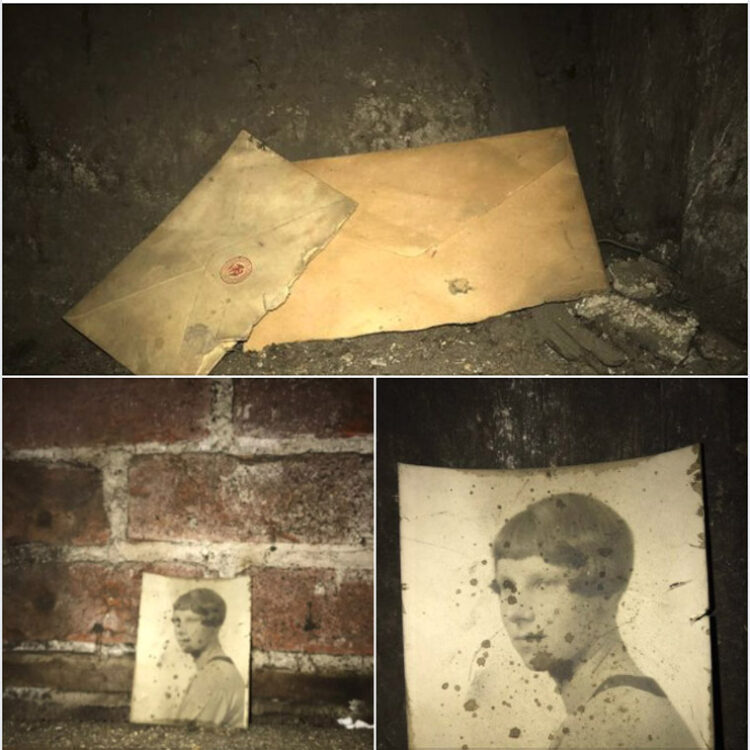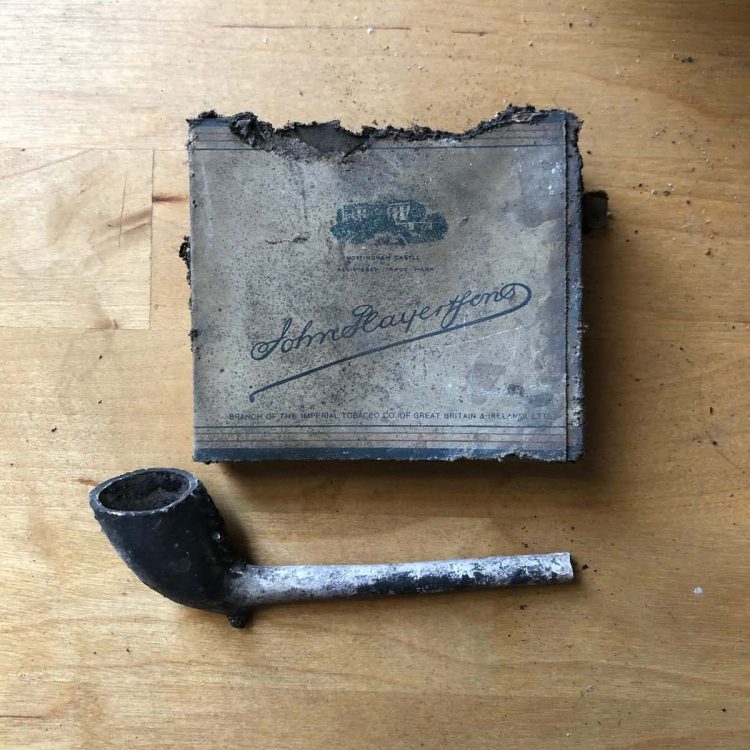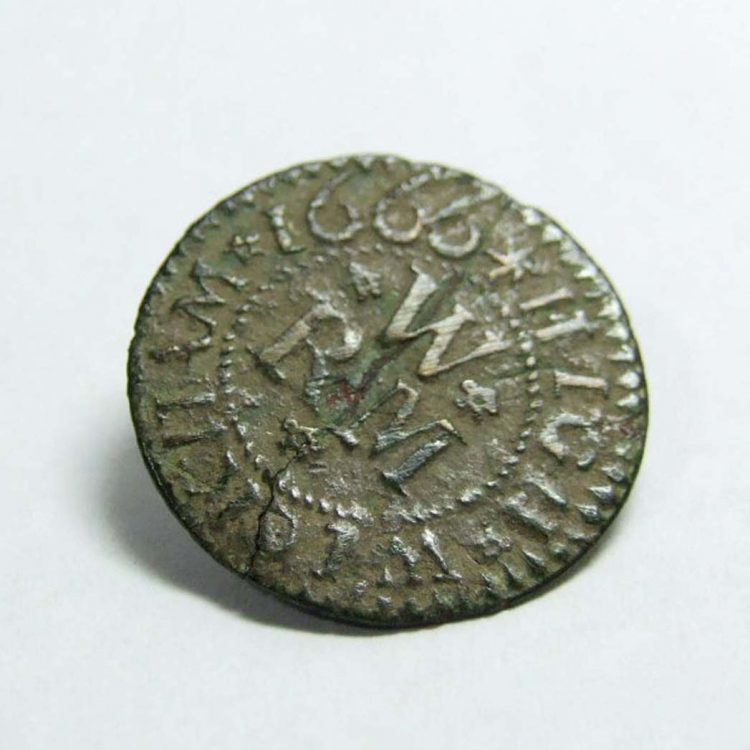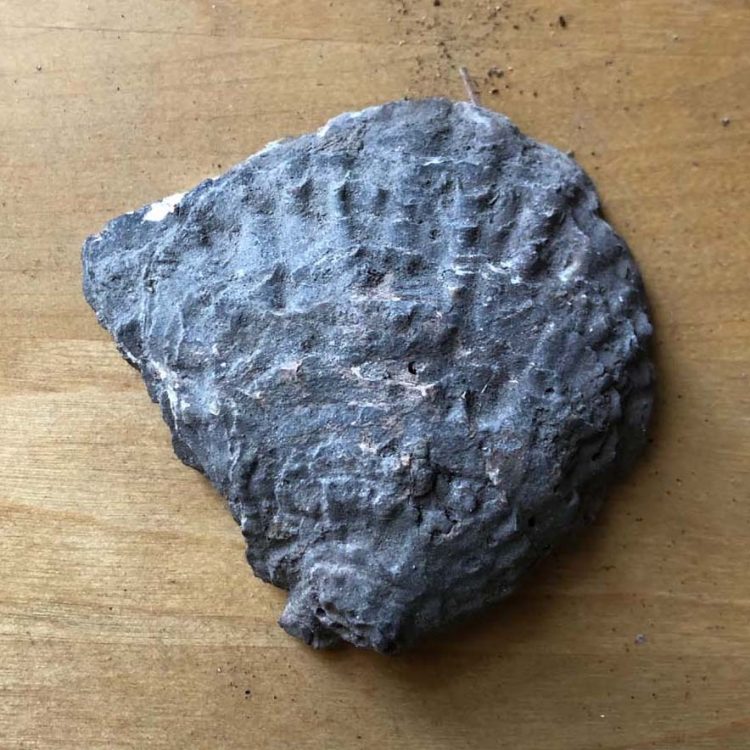Current Project

The Wheatsheaf, High Wycombe
2/3 High Street
High Wycombe
The Trust took a long lease on the former Wheatsheaf Public House in 2017. Apart from a small shop, the building had been empty for some years, and its condition had been declining.
We have taken the opportunity to repair the historic fabric and restore the building to full but flexible use as a cocktail bar and community hub, once again playing an important role at the historic centre of High Wycombe.
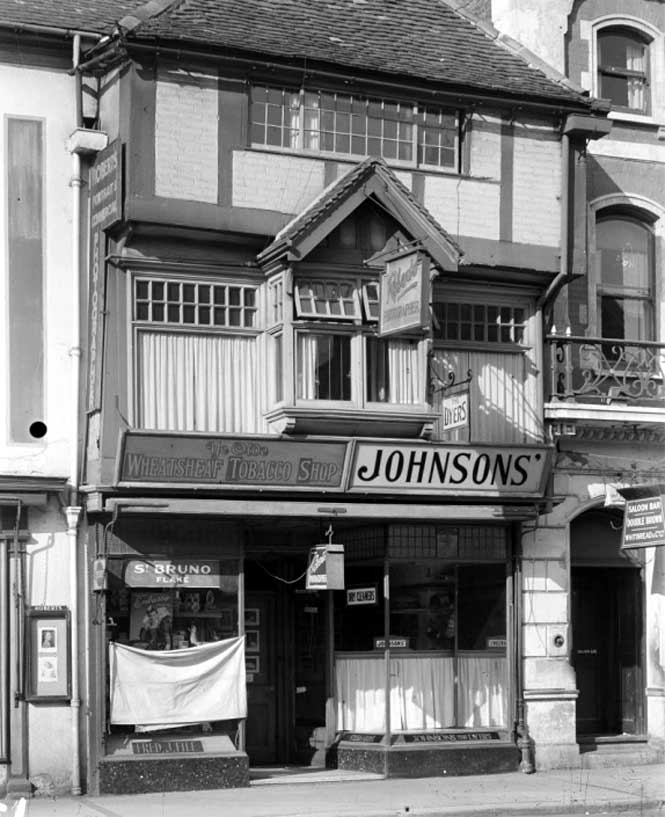
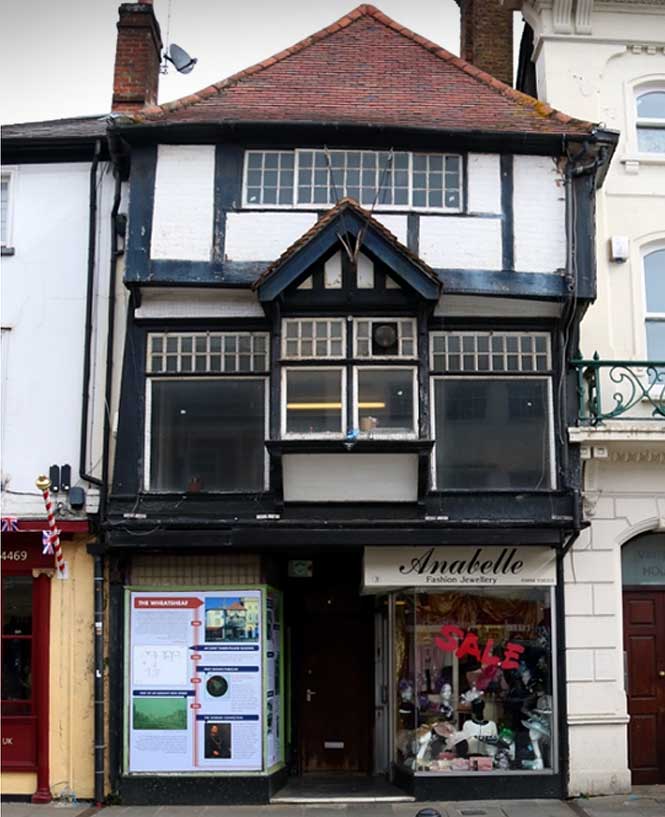
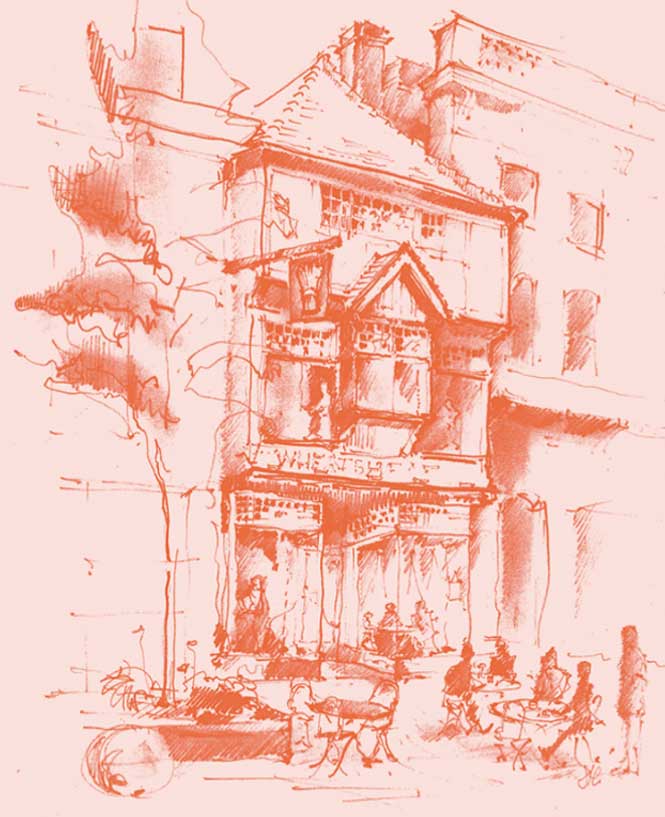
What is so special about the Wheatsheaf?
The Wheatsheaf is more ancient than it looks:
- its timber frame has been dendro-dated to 1399. Future visitors will be able to see the framing more clearly and enjoy the impressive roof timbers in the newly re-opened top room. This was evidently an important medieval space!
- The restored frontage will once again form a focal point in the historic High Street. The double overhang here suggests a prestige building, and we hope that the works will reveal more about its 15th century appearance – could there have been a street arcade below the deep first-floor jetty?
- The west side once faced directly onto Church Square. It would have had an important relationship with the church, and later with the 18th century Guildhall and Little Market House. The OS map shows how it had become enclosed by No. 1. by 1876.
- By the late 17th century the building had become a coffee house. The painting of c.1772 shows it in use as a small inn with a wheatsheaf sign and the landlord puffing on his pipe outside. The building remained a public house until 1903, when it became a shop. When back in use as a social and community venue, it will again draw visitors and help to restore the vibrancy of the historic centre of the town.
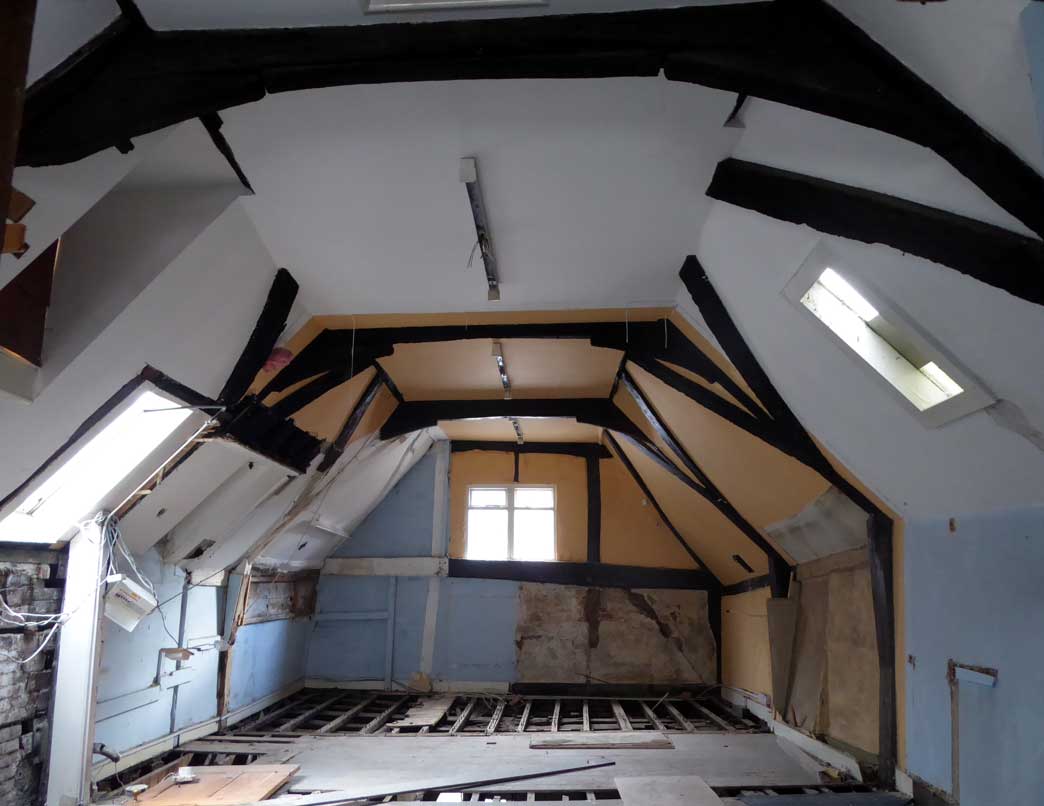
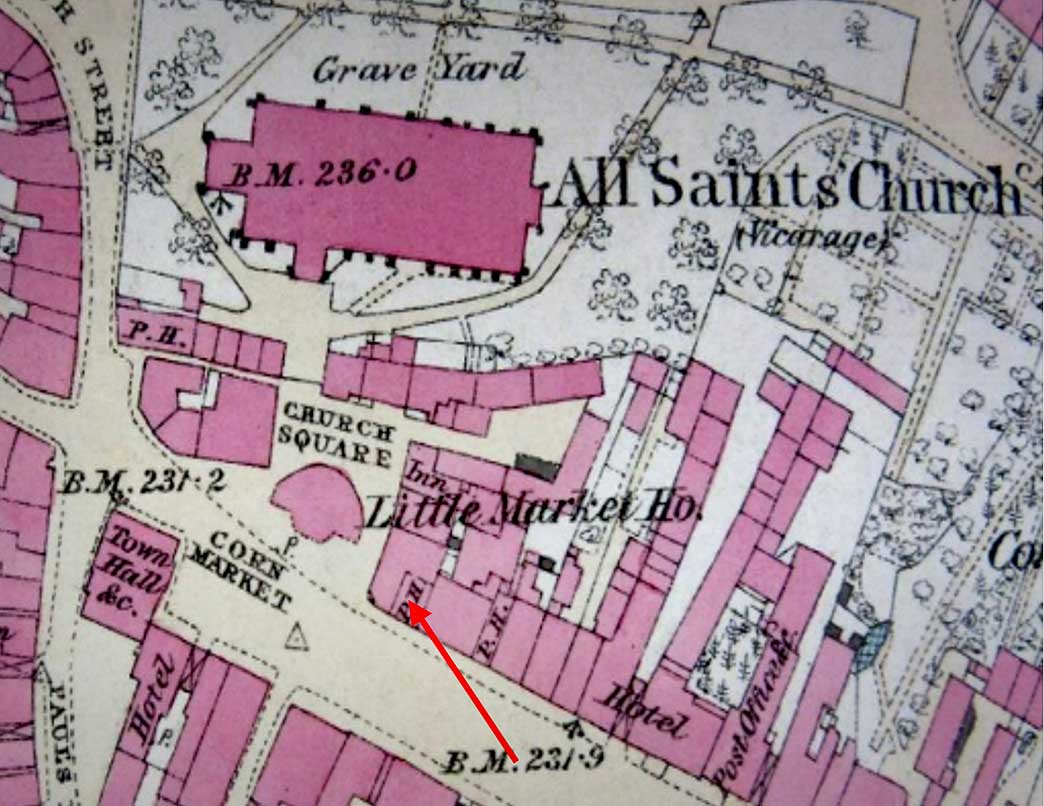
More information:
![]() The History of The Wheatsheaf
The History of The Wheatsheaf
- an account by Trust member Marian Miller
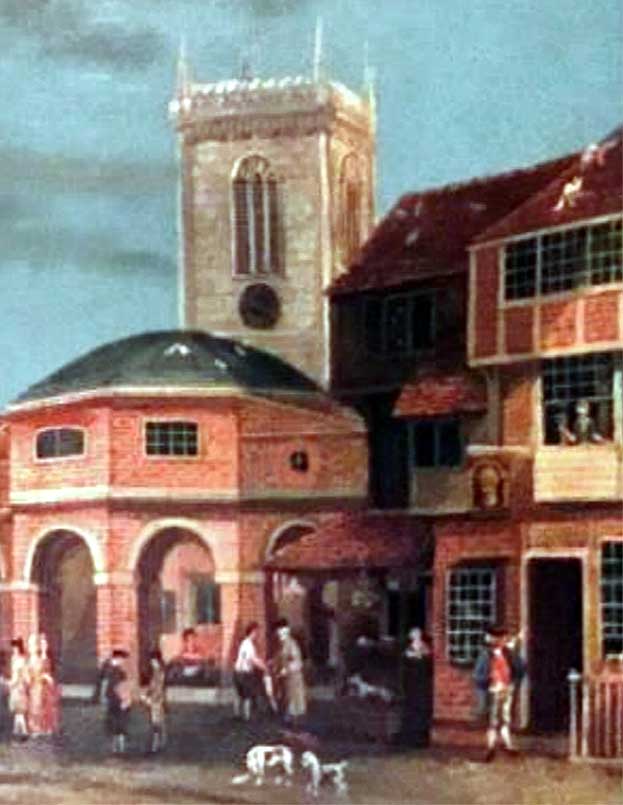
For more information on the history of The Wheatsheaf click here to read an account by Trust member Marian Miller
Preparations for the works at the Wheatsheaf
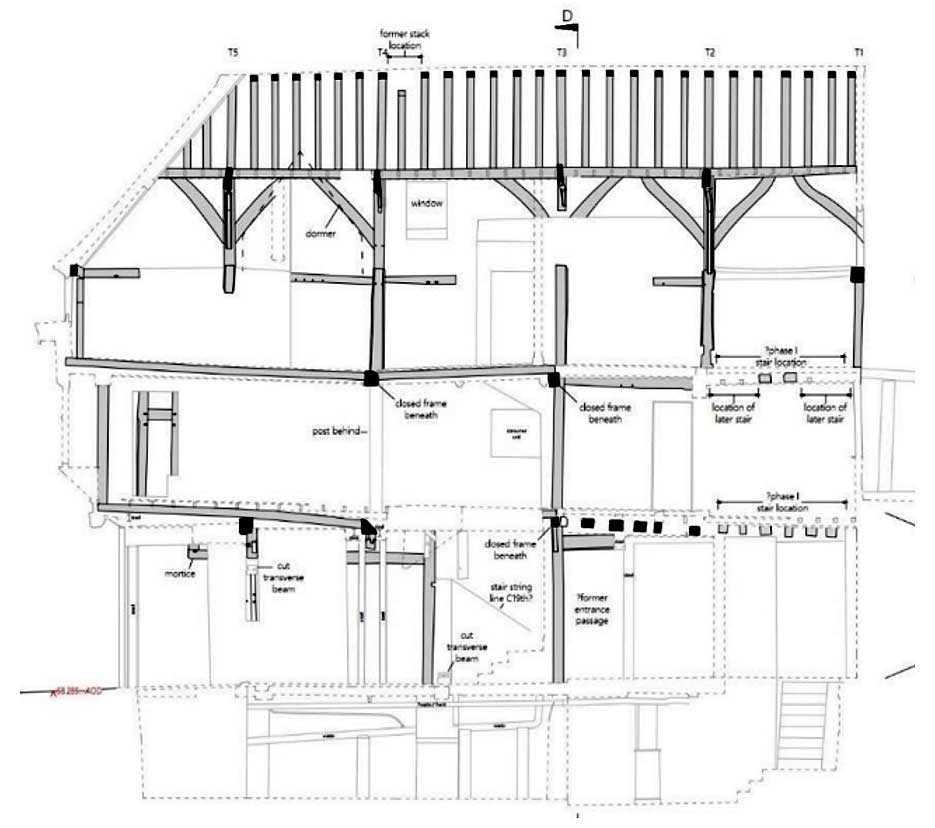
The Trust has:
- worked with Wycombe District Council to secure the purchase of the building and our lease, and to discuss how the Wheatsheaf can complement the Future High Streets Project
- researched the history of the building and its role at the centre of High Wycombe
- commissioned analysis and recording of the historic structure as a means of better understanding it.
- given talks and displays, and joined with the Wycombe Society in holding a “Guess the Date” competition.
- commissioned Oxley Conservation to carry out a building condition survey and provide a costed schedule of repairs
- considered options for use of the building, informed by a viability study by Barker Langham
- consulted the Wycombe Society and other local groups
- held discussions with local entrepreneurs and identified a keen future tenant
- worked with Natasha Brown of Giles Quarme Architects to devise a suitable layout and sensitive alterations necessary to achieve the use
- obtained listed building consent and planning permission
- appointed Ward & Co as contractors for the works.
The works so far …..
Ward & Co began work on site on 2nd November 2020.
A lot of work has been going on behind the hoarding at the former Wheatsheaf pub, and is now nearing completion. Top priority was repairing and retiling the roof, whilst new rooflights have been fitted and insulation installed. The timber frame at the rear has been repaired including a post which had been attacked by Death Watch beetle. The rear wall has been lime-rendered.
Attention to external works then switched to the front façade, whilst inside, the staircase has been removed to make way for new stairs and lifts. New partitions have been erected to create kitchens and W.C s. Electrics, other services, fire escapes etc have been accommodated whilst not damaging the historic structure.
Our contractors, Ward & Co and all the members of the team are specialists in historic conservation and the work has to be approved by the Council’s Conservation Officer. The measured archaeological survey of the building was delayed due to COVID restrictions (our surveyor is based in Wales) but has now been completed. We are looking forward to seeing a reconstruction drawing of the original (1399) building. Only recently discovered are these ‘red, white and blue’ borders to the wattle and daub panels, awaiting analysis by our paint expert.
There have been a few finds which reflect the previous uses of the building. A pipe and Players cigarette packet no doubt come from tobacconist Fred File’s time running “Ye Olde Wheatsheaf Tobacco Shop” at number 2. Perhaps you remember Cyril Roberts photographic studio upstairs Presumably he took this photo of Penn and Tyler’s Green Cricket Club.
Other finds include an oyster shell and part of an old boot! Underneath the floorboards were lots of walnut shells, which were used as an early form of insulation.
The work is due to be completed by mid-February, and look out for a forthcoming announcement of the grand opening.
Adapted from
A history of the old Wheatsheaf pub building in High Wycombe
Bucks Free Press, 15 August 2021
Historical research
Historic research is ongoing and there is a new history display on the hoarding. This includes reference to Robert Watson, who appears to have been running a coffee shop in the Wheatsheaf by the late 1600s. Coffee-houses were all the rage in the later 17th century starting in London and Oxford and spreading to towns throughout the country. Situated midway between London and Oxford it would not be surprising for Wycombe to have one too.
The Wheatsheaf, on the corner next to the market place, was ideally placed for such a venue. By a 1695 deed at Buckinghamshire Archives, John Chalfont, a bookbinder, and his wife Phillis, sold a cottage near the Hogmarket (now Church Square). This cottage “wherein Robert Watson lately dwelt” was between the house of Dorothy Kidder on one side and a building called the coffee-house on the other side.
Dorothy Kidder was the daughter of the mayor, Richard Lucas, and had married William Kidder, a Quaker, and mealman who had come to the town from Southwark. When William died he left houses in Church Square and I believe that Dorothy would have been living in number 5 Church Square (now PMG Schoolwear).
The present Wheatsheaf goes underneath and over its neighbours, 1 High Street and 5/6 Church Square. Indeed we have found a former connecting door at first floor level between the Wheatsheaf and 5 Church Square. The 1695 sale also included three shops (one of them Robert Watson’s) and part of the building within the same frame and used with the coffeehouse.
So this was a mixed up building, just like ours! It seems very likely that this would have been what is now 1 High Street and 6 Church Square and at least part of the current Wheatsheaf.
A token has been brought to our attention which carries the date 1666, portrays a Saracen’s or Turk’s head (the sign of a coffeehouse) and the initials “W and RM”.
Robert married Mary Joanes in 1661 so she must have been the “M” on the token. Mary sadly died in 1670 and Robert married Elizabeth Big at Wooburn church soon after. They had a daughter Elizabeth who was baptised at All Saints, Wycombe in 1671. The parish register shows Robert was buried at Wycombe in 1703.
Robert’s marriage in 1661 is the first mention of a Watson in that parish register and Watson was not a common local name. So where had Robert come from? The only likely Buckinghamshire candidate found so far is a Robert Watson baptised in Marsh Gibbon in 1641.
In 1652 his father had apprenticed Robert for eight years to William Childs of the London Company of Cordwainers (shoemakers and leather-workers).
After completing his apprenticeship, had Robert moved to Wycombe and decided to better himself by trying his luck by getting on the coffee-house bandwagon and opening a business in Wycombe? Might he have had a shoemaking shop in Church Square as well as a coffee-house in the Wheatsheaf? The research goes on!
We are grateful to Geoffrey Swindells, a local expert on trade tokens, for the pictures of Robert Watson’s trade token and more information about Robert.
More pictures of the building works
A few more interesting finds
How is the Project funded?
The Trust is grateful to:
- the former Wycombe District Council (now part of the Buckinghamshire Council) for purchasing the building and leasing it to us on favourable terms.
- The Architectural Heritage Fund for:
- a Project Viability grant of £6,000
- a Project Development Grant of £15,000, and
- A Transforming Places Through Heritage grant of £350,000
We have been using Trust funds to pay for much of the initial preparation and some of the repairs. These costs will be recouped from future rent and so allow us to move on to future projects.

